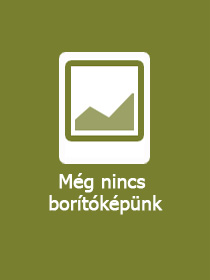
| ISBN13: | 9783031828362 |
| ISBN10: | 3031828364 |
| Kötéstípus: | Keménykötés |
| Terjedelem: | 361 oldal |
| Méret: | 235x155 mm |
| Nyelv: | angol |
| Illusztrációk: | 5 Illustrations, black & white; 33 Illustrations, color |
| 0 |
Social Media in the Changing Mathematics Classroom
EUR 181.89
Kattintson ide a feliratkozáshoz
This edited volume gathers contributions from international scholars focusing on social media's role and impact on mathematics education. Social media's integration into pedagogical strategies (from social networking sites to video-sharing platforms) offers the opportunity to enhance learning by fostering connectivity and engagement among students, ultimately improving mathematical understanding in educational settings. This text aims to provide guidance on the facilitation of peer learning and collaboration, as well as highlighting the necessary shift in traditional methods to include cyber assistance in the learning process.
The book discusses how social media aligns with social-constructivist theories of learning, its consistency with the process of developing students into independent learners and provides means to ensuring educators remain relevant and connected to students' preferred modes of learning. Challenges and benefits of the use of social media tools in teaching are also detailed. Examining the potential for effective integration of social media in the classroom, this book is a valuable resource for educators, practitioners and researchers interested in mathematics education.
This edited volume gathers contributions from international scholars focusing on social media's role and impact on mathematics education. Social media's integration into pedagogical strategies (from social networking sites to video-sharing platforms) offers the opportunity to enhance learning by fostering connectivity and engagement among students, ultimately improving mathematical understanding in educational settings. This text aims to provide guidance on the facilitation of peer learning and collaboration, as well as highlighting the necessary shift in traditional methods to include cyber assistance in the learning process.
The book discusses how social media aligns with social-constructivist theories of learning, its consistency with the process of developing students into independent learners and provides means to ensuring educators remain relevant and connected to students' preferred modes of learning. Challenges and benefits of the use of social media tools in teaching are also detailed. Examining the potential for effective integration of social media in the classroom, this book is a valuable resource for educators, practitioners and researchers interested in mathematics education.
Chapter 1. Social Media in the Changing Mathematics Classroom.- Part I. The Evolution of the Use of Social Media.- Chapter 2. Social Media: A Transformative Tool in Mathematics Education in the 21st Century.- Chapter 3. Artificial Intelligence and Social Media in Mathematics Education.- Chapter 4. Facebook in Mathematics Education: Insights from a Research Group?s Practice.- Chapter 5. Conversation on Evolution of Students? Problem-Solving Experiences in a Learning Environment combining Classroom Teaching and Asynchronous Forums.- Part II. Students and Social Media.- Chapter 6. Investigating Student Participation in a Course-Accompanying Forum in Linear Algebra and its Relation to Course Grades.- Chapter 7. The Mathematical Network: Exploring Cultural and Epistemological Dimensions of Leveraging Social Media in Mathematics Education.- Chapter 8. Students' Insights on learning Mathematics via the WhatsApp Social Network.- Part III. Teachers and Social Media.- Chapter 9. Teachers' Points of View on teaching High-School Mathematics via the WhatsApp social Network.- Chapter 10. Utilizing Social Media to publicize aesthetic Mathematical Experiences in a Pre-Service Teacher Education Program.- Chapter 11. Facing The Challenge of inclusive Mathematics Education: An Analysis based on dialogic Learning and Social Media in Mathematics Teacher Education Settings.- Chapter 12. Examining Gender Differences in Teachers? Use of Facebook: Looking to eliminate Gender Gaps in Teacher Professional Development.- Part IV. Videos and Video Social Media sites in Mathematics Education.- Chapter 13. Youtube Videos by a Renowned Mathematician as a Content Resource in a Flipped Class on Algebraic Geometry: An Exploratory Case Study in Graduate Mathematics Education.- Chapter 14. Perceptions of Youtube Tutorials - Do they Complement or Replace the Mathematics Classroom?.- Chapter 15. An Exploration of Korean Citizens? Debates about Mathematics Problems in Youtube Shorts.- Chapter 16. Mathematical Narratives on Youtube: Festival of Digital Videos and Scientific Live Streams within a Research Group Channel.

